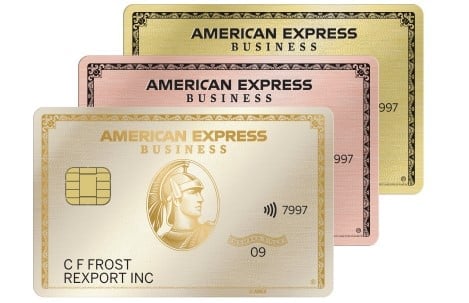How Do Business Loans Work?
Lenders issue business loans, then business owners pay them back over time, plus interest.

Many, or all, of the products featured on this page are from our advertising partners who compensate us when you take certain actions on our website or click to take an action on their website. However, this does not influence our evaluations. Our opinions are our own. Here is a list of our partners and here's how we make money.
Concerned about tariffs?
Many small-business owners are under increased economic stress and uncertainty following the latest tariff announcements. NerdWallet is here to help you find answers for whatever you're looking for. Here are some resources to help you get started:
Need emergency funding? Consider a business line of credit.
Looking for fast access to working capital? Discover the best working capital loans.
Want tips on how to mitigate the impact of tariffs? Read our guide.
When you take out a business loan, you borrow money from a lender and pay it back over time with interest. Small-business loans can help you expand your business, make up for seasonal gaps in your cash flow, cover expenses during a downturn and more.
» MORE: What is a business loan?
How business loans work
In general, different types of business loans follow the same basic steps:
You submit an application, along with pertinent financial documents. .
A financial institution agrees to lend you a certain amount at a specific cost, including interest and fees.
In exchange, you provide collateral or a personal guarantee to pay the loan back on time.
You receive the funds in a lump sum or as a line of credit.
You pay back what you borrow on a prearranged payment schedule.
If you don’t repay the loan on time, a lender may consider your loan to be in default and can seize your collateral or other assets.
Let’s dig into the specifics of some of the most common types of business loans.
How much do you need?
We’ll start with a brief questionnaire to better understand the unique needs of your business.
Once we uncover your personalized matches, our team will consult you on the process moving forward.
How business term loans work
When you take out a business term loan, you receive a lump sum of cash and then pay it back over time. If you’ve taken out a student loan or a mortgage, business term loans work similarly.
Term loans follow these steps:
Your business applies for a term loan.
The lender agrees to lend you a certain amount and sets an interest rate.
You receive the funds you applied for in one lump sum.
You repay the lender in predetermined amounts on a schedule.
Once the loan is repaid, you’ll have to apply for another loan if you need more funding.
In general, business term loans best suit companies planning for significant growth. Some are even designed for specific types of development, like equipment financing or commercial real estate loans.
How business lines of credit work
Business lines of credit work differently from term loans. Instead of receiving the entire loan at once, you can withdraw the funds you need as you need them. Similar to a credit card, your payments are based only on what you’ve withdrawn.
Business lines of credit follow these steps:
Your business applies for a line of credit.
The lender agrees that you can withdraw funds up to a specific limit and set interest rate.
You can draw on your line of credit as needed.
You repay what you borrowed on a fixed schedule with interest.
Once you’ve repaid what you borrowed, you can withdraw it again. The limit applies to how much you can borrow at one time, not how much you can borrow over the life of the line of credit.
Lines of credit can help fund a business expansion, but they’re also useful for business owners with uneven cash flow who occasionally need credit. In addition, some business owners like to have lines of credit in an emergency.
How merchant cash advances work
Merchant cash advances (MCAs) are lump sums you repay with a percentage of your future sales, usually on a daily or weekly basis. Like a line of credit, they can be helpful for business owners who are struggling to cover gaps in cash flow. Repayment can be structured either as a fixed daily or weekly payment, or a percentage of your daily or weekly sales.
Merchant cash advances follow these steps:
Your business applies for a merchant cash advance with an MCA company.
The MCA company gives you a lump sum of cash.
You repay either daily, weekly or monthly — either as a fixed payment drawn from your business bank account or a percentage of your sales revenue — until the full amount plus fees is repaid.
You may have the opportunity to get another advance from the same company once a certain percentage of the advance is repaid.
MCAs are fast and easy to qualify for, but they can be expensive and trap you in a bad cycle of debt. Exhaust all other options before turning to an MCA.
How invoice financing works
With invoice financing, also known as accounts receivable financing, you receive lump sums of cash by borrowing against your outstanding invoices. Invoice financing can be good for businesses that need cash to pay for things like inventory or labor, but haven’t been paid for work or services yet.
Invoice financing follows these steps:
Your business applies with an invoice financing company.
The invoice financing company agrees to front you a percentage of your outstanding customer invoices, sometimes up to 97%.
Once the customer pays the invoice, you repay the amount borrowed, plus the company’s fees.
Because your invoices also serve as collateral, you may be able to qualify without factoring in barriers like personal credit. But like MCAs, invoice financing can be an expensive form of financing when you convert monthly fees into APRs.
How to choose a business loan that works for you
The best business loan for you is the one that offers the most favorable rates and terms. Here’s what you can expect from each.
Business loans from banks, which can include long- or short-term loans, lines of credit or commercial real estate loans, tend to have the lowest interest rates. But they’re also generally the hardest to qualify for and can take longer to fund than other loan options.
Online business loans, which can include term loans or lines of credit typically have less stringent application requirements than bank loans and can get funding faster. However, they also tend to have higher interest rates.
Loans from alternative lenders can include online lenders, merchant cash advance or invoice financing companies, fintech companies or nonprofit lenders like community development financial institutions (CDFIs). Generally, loans from alternative lenders are easier to qualify for than bank loans, and rates and terms will vary depending on which type of lender you go to. MCAs, for example, are among the most expensive financing options, while CDFIs often have rates and terms that are competitive with banks.
How to qualify for a business loan
While each lender has its own process and requirements, there are some things that most lenders will request or ask you about:
Personal or business credit scores. Both personal and business credit can factor into your approval chances, as well as your loan terms.
Financial documents. While it’s prudent to keep good financial records at all times, you likely won’t get far in a loan application process without submitting things like business tax returns, profit and loss statements, balance statements and more. These documents are how lenders run your numbers and ultimately make their decision. Some online lenders, however, have a streamlined application process that requires nearly no documentation to apply.
Time in business. For a traditional business loan, most lenders want to see at least two years in business. However, some online lenders only require six months.
Use of funds. Whether it’s an official document or not, lenders want to know why you are applying for funding and the purpose of a loan.
Collateral or personal guarantee. Large assets that can serve as collateral can significantly improve your chances of approval. If you don’t have physical collateral, a lender may ask you to sign a personal guarantee, which means you will personally take over loan payments if your business can’t.





